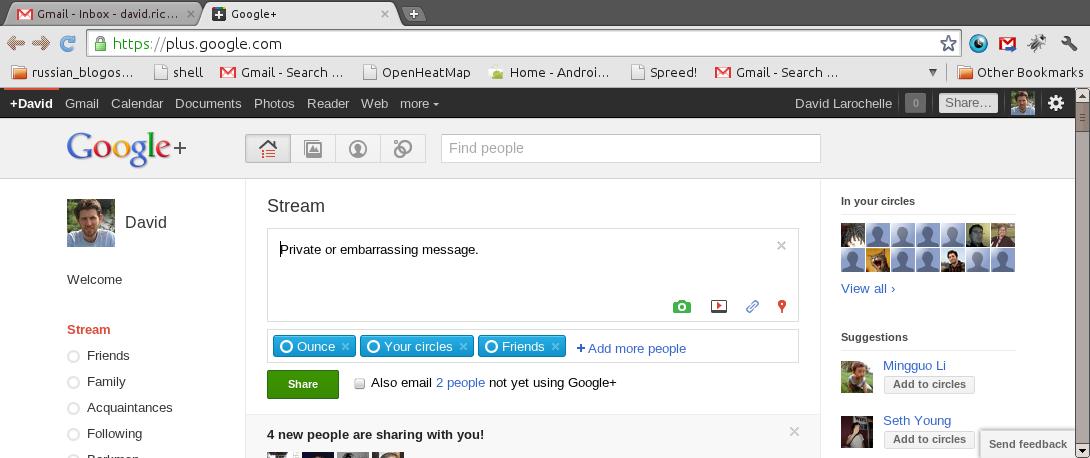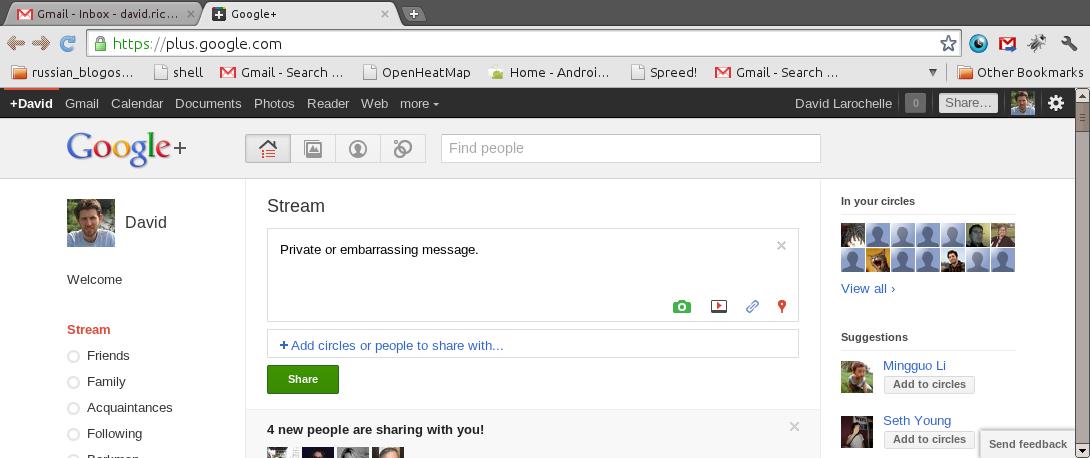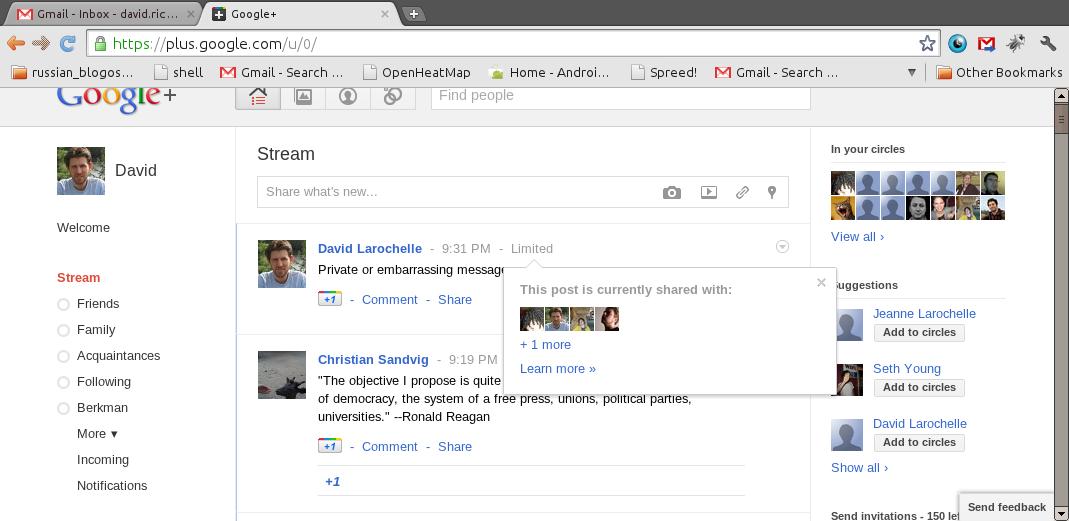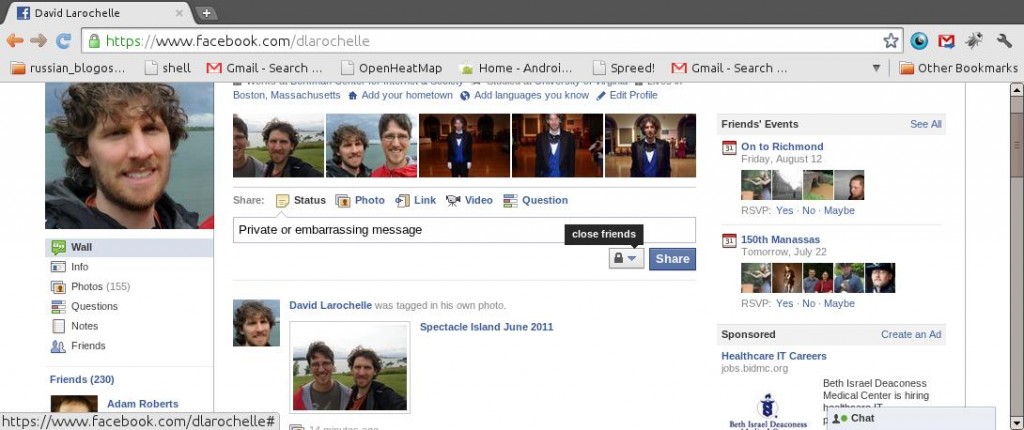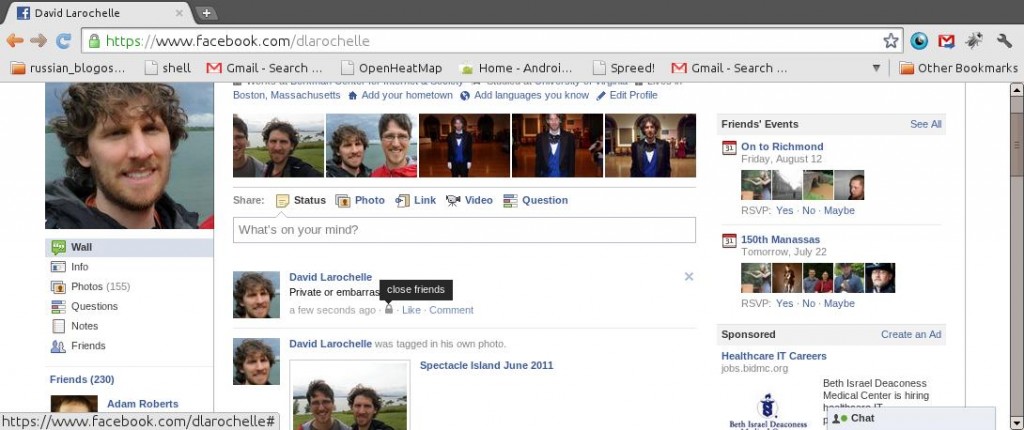I recently attended
Pi-Con— an annual science fiction convention in the Pioneer Valley. I’ve decided to blog about my experience with the following goals:
- Write down key ideas mentioned in panels so they won’t be lost.
- Provide an overview for people who couldn’t make it because of the hurricane.
- Provide an overview for people curious about the con.
Disclaimer: This post is based on my memory of the events as well as a few notes that I took at the convention. However, it’s possible that I’ve gotten things wrong and left out important details. Also while I’ve mentioned some of the key contributors, I know that I haven’t mentioned everybody who contributed. Please don’t feel slighted if I neglected to mention you or properly attribute your contribution. If you contact me, I’ll be happy to update the post.
Also this year I was on 8 panels. So if my account focuses on that aspect of the convention, it’s simply because that’s the way the majority of my time was spent.
This was my 5th time at Pi-Con and I served as a panelist as well as an attendee. I’m a bit a science fiction convention junkie. Although I’m interested in science fiction, I view these events primarily as a way to meet and interact with a diverse group of people in a social intellectual environment and enjoy the opportunity to learn about new ideas and perspectives. Fandom brings together an unusually diverse group of intellectually inclined people from different backgrounds. Good panels have a lot of audience interaction and often benefit greatly from audience contributions. For example, this year the “Can I go to Jail for That?” panel had lawyers as panelists but there also happened to be a municipal prosecutor in the audience who also made insightful contributions.
This year, Pi-Con took place the same weekend that hurricane Irene hit. This reduced attendance by about a third. But there was also a great deal of camaraderie among everyone there and I was very impressed with the way the Con staff handled things. One of my treasured memories will be being one of a group of people singing along to “Come on Irene” the night before the storm hit. The hotel itself was largely unaffected by the storm — we didn’t lose power and there was no damage to the building itself. Still due to road closures and the danger of the storm itself, people chose to stay longer on Sunday. To accommodate this, the con staff added additional programming for Sunday night.
Panels
My first panel dealt with the future of libraries given the existence of eBooks and other digital technologies. This was a very well attended panel and both the panelists and the audience displayed an immense love for libraries. The traditional benefits of libraries were tauted such as:
- Trying out new authors
- Out of print books
- Inter-library loan
Another interesting discussion was libraries as a way of helping the disadvantaged. For example, Can’t afford to buy books? Go to your library. Unemployed and need a computer to job hunt? Go to your library. Don’t have heat or AC? Go to you’re library — they probably do.
We also discussed the role of privacy and libraries. Here there is an apparent contradiction between the civil libertarian ideal of pure privacy for a patron records and the benefits of knowing what materials are popular among which of your follow patrons. Anonymizing records turns out to be an extremely difficult technical problem. Many apparently innocuous projects at the Harvard libraries have needed to be curtained because of concerns that sophisticated analysis could reveal individual borrowing habits. The companies like Amazon without these same obligations to user privacy are able to provide recommendation that wouldn’t be possible for a library.
At one point, someone gave an impassioned defense of librarians as great civil libertarians standing up to NSA subpoena’s to fight for their members’ privacy. However, 10 minutes latter the same person also mentioned how helpful it was that users of their library wrote their names in the backs of books that they checked out so that you could find someone with similar tastes and determine what else they liked.
My next panel was on the subject of Immortality & Radical Life Extension. We initially spent sometime discussing the idea of the singularity and of downloading your consciousness to a computer — the most commonly cited means of achieving effective immortality though technical means. However, we soon moved away from computational suggestions and focused on biological alternatives.
Dr James Prago discussed characteristics that are common to societies that have usually long life expectancies such as Punjabi Indians. These include: high altitude, a low meat diet, some type of spirituality, respect for the elderly, and exercise. Led by Shaighn Bryant, we discussed some possible biological reasons behind these factors. For example, living at a higher altitude may lower your metabolism and societal respect for the elderly is likely to mean they get better medical care.
However, these types for minor life adjustments are unlikely to add more than 20 to 30 years of life. We discussed some more radical possibilities such as clone bodies and brain transplants. Brain transplants were actually done somewhat successfully on monkeys in the Soviet Union in the 1960s. However, because we currently don’t understand spinal tissue, recipients would be quadriplegics. (The spinal tissue problems may eventually be solved by stem cells or other means if groups like the Christopher Reeve Foundation are succesful.) Currently, you would also need anti-rejection drugs after the transplant. But if you could clone your body, anti-rejection drugs wouldn’t be necessary. Brain transplants like this are certainly a long way off and you would still need to deal with brain diseases such as Alzheimer’s but they could potentially be used to deal with diseases of the body.
Early Saturday morning, I was on a panel on Steampunk costuming. We focused on the basics of steampunk costuming and tried to show that steampunk is easy to get into. We argued that steampunk can be done cheaply and suggested getting one good outfit that you can accessorize.
It was also pointed out that Steampunk isn’t like typical cosplay. If you’re dressing as a well known anime character everyone will know what the character is supposed to like look and there will be other people in the same outfit. By contrast, in steampunk you can be dressed as the only one of something so details matter less.
My next panel was “Essential DIY Tools”. This panel ended up focusing on 3d printers and similar devices such as CNC routers. 3d printers have the potential to fundamentally alter the way things are made if they become mainstream. Though still pricey, they’re becoming more affordable. MakerBot’s current model kit is available for around $1300 and older models can be obtained used for under a $1000. However, we were warned that you’re likely to spend around 40 hours assembling and calibrating a MakerBot 3d printer you try to assemble from kit.
One of my co-panelists, Drew Van Zandt, is affiliated with Artisan’s Asylum (http://artisansasylum.com). I have no direct knowledge of Artisan’s Asylum but it seems like a great resource for makers in the Boston area. They have a space in Somerville with a large number of tools such as 3d printers and CNC routers as well traditional wood working tools that you can access for a monthly membership fee.
danger!awesome was another Boston area resource that was mentioned. Located in Central Square in Cambridge, they will rent you time on laser cutters.
There are also some online 3d printing shops such as Shapeways.
There were also some recommendations for tools that you can keep in your apartment including the following: sheet metal nibbler, blind rivet tool (pop rivet), hand/finger brake tool, band saw, and scroll saw.
My Other Panels
Roddenberry vs. the Artificial
This panel concerned the idea that Roddenberry’s Star Trek had a preference for the human/natural and a disdain for the artificial. For example, Data is a “Pinocchio” character who yearns to be human and unlike Star Wars there are no artificial limbs in Start Trek. The description asked the provocative question “Was Roddenberry an Able-ist”?
The actual panel turned out to be more reflective than argumentative. We started off spending some time discussing and defining the term Able-ist. Ableism is not a widely known or understood concept so the discussion was enlightening to most of the room. (Some in the audience understood and explained ableism far better than me or the other panelists.)
It was generally acknowledged that Star Trek under Roddenberry was far from perfect but the audience was generally willing forgive this given the limitations of the time and the medium. Simply including a geographically and racial diverse cast in the original Star Trek in the 1960’s was ground breaking. Arguably one show can only break so many barriers.
Similarly there were complaints that Star Trek doesn’t have any obese or unattractive people. But that was acknowledged to be a problem with television in general. (Rosanne is the exception that proves the rule.) Indeed, Dr. James Prego described the pressure that his actor friends felt to get in shape. Unless the actors — male of female — were in very good shape, the types of roles they could play were very restricted.
Lulzsec, Anonymous, and Internet Vigilantism
We started with an interesting discussion of the history of Lulzsec , Anonymous, and other actors such as the Jester. This quickly led to a debate on the ethics of hacking into systems to show they’re insecure. Some argued that no system is perfectly secure and so compromising and defacing a system proves nothing and is purely destructive. Some others countered that some systems are more secure than others and that it’s better for a site’s vulnerabilities to be publicly exploited by Lulzsec than silently exploited by the Russian mafia.
One of the things that I really like about conventions is that putting people from different backgrounds together often leads to unique perspectives. Such was the case with this panel. Justine Graykin suggested that it says something about our society that having Amazon taken down temporarily would be considered such a big deal. People responded with a variety of technical and economic arguments. Amazon’s EC2 hosts many sites such as Twitter and Netflix which would also be taken down if Amazon went offline. People earn their living on Amazon. Loss of money leads to a loss of jobs. Still she made an interesting point about the need for immediacy in our society.
“Love and the Robosexual”
Late Saturday, there was a panel on “Love and the Robosexual” discussing our fascination with robot characters. I was an audience member not a panelist but found it interesting nevertheless. One interesting point was when a panelist suggested that many women are interested in emotionally unavailable men. She theorized that the appeal of robots such as Data and robot-like characters such as Spock is their lack of emotional capacity which makes them the ultimate example of emotional unavailability.
Hurricon/ Extendacon
As mentioned above, the con got extended due to the hurricane. We had a series of bonus panels on Sunday evening which we termed Hurricon. I ended up on a network neutrality panel specifically focused on the wired vs. wireless distinction with Will Frank as copanelist. The attendance was relatively small since many people had already left ahead of the storm but the discussion was good. We came up with the term ‘network bias’ to mean the opposite of ‘network neutrality’. (The term may have been used elsewhere but this was the first time I’d heard it.) There was an interesting argument over whether given a limit data plan, wireless companies would be morally justified in limiting traffic or applications to protect customers from going over their data allowance. There are certainly cases in which this type of paternalistic behavior could benefit less technically sophisticated customers. For example, if someone has a 200 MB data plan, it probably wouldn’t make sense for them to steam movies through Netflix using their cellular data. On the other hand, it is questionable whether cell phone companies be trusted and it would seem naive to assume they wouldn’t abuse this power. For example, a company might wish to block voice calls over Skype but allow Netflix streaming.
Conclusion
Though hurricane Irene limited this year’s Pi-Con attendance, it was still an excellent convention for those who were able to attend. The combination of insightful discussion and plus the convention camaraderie in face of the storm made it a truly memorable and enjoyable experience.
For those who missed Pi-Con this year, next year’s Pi-Con (Pi-Con 7) will take place next summer August 17-19, 2012 in Enfield, CT. Pi-Con has always been enjoyable and I plan to continue attending as long as I live within driving distance of the pioneer valley.
UPDATE: Justine Graykin has also blogged about Pi-Con. You can read her report here.

